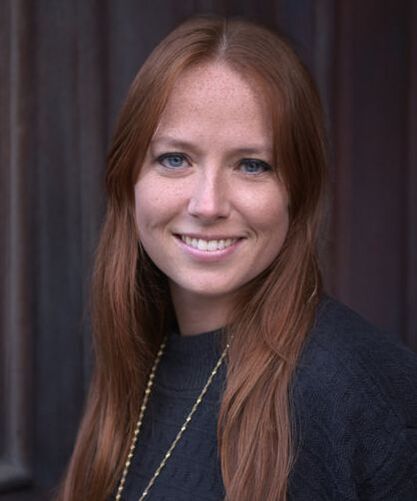ASSAY: A JOURNAL OF NONFICTION STUDIES
8.2
8.2
|
“Have you read both of these? How are they different?” I asked my bookseller in Baltimore, referring to two new releases, both about the same series of events, written by authors with similar backgrounds, and with generally the same audience in mind.
Living in the city, I already knew the broad outline of the crimes that led to I Got A Monster: The Rise and Fall of America’s Most Corrupt Police Squad (St. Martin’s 2020) by Baynard Woods and Brandon Soderberg and We Own This City: A True Story of Crime, Cops, and Corruption (RandomHouse, 2021) by Justin Fenton. They both told the story of The Gun Trace Task Force (GTTF), a police unit so corrupt, you’d be hard-pressed to believe it if the plot line had shown up on the HBO show The Wire. Led by Baltimore Police Sergeant Wayne Jenkins, the GTTF had not only been violating the constitution when they made illegal stops to purportedly seize guns and make arrests, they had been planting guns and drugs on suspects, robbing drug dealers, selling drugs, and falsifying police reports. An FBI investigation and wiretaps eventually led to the arrest of the whole force, and guilty pleas or verdicts from all the members of the GTTF. With the same subject, the same distance in time from the crimes, the same available source material, the same audience in mind (both books are trade nonfiction, written for a white audience) and similar perspectives (the authors are also all white men, who have been long-time crime reporters in Baltimore city), where did the books diverge? [1] “I’ve heard that I Got a Monster reads like a novel and We Own This City is more like journalism,” one of the employees at the store told me. I wondered what it meant when a reader designated a nonfiction book as written “like a novel” or “like journalism.” After reading both books, I understood that they both had roots in the nonfiction novels of the 1970s and New Journalism, and that in fact, I Got a Monster had swift pacing and vivid scenes while We Own This City used more exposition. I also knew that I Got a Monster received less attention than We Own This City (which is being dramatized for an HBO show, and was reviewed in The New York Times, Wall Street Journal, and the Washington Post), and wondered why Fenton’s writing “like journalism” might have more appeal than I Got a Monster. Nonfiction novel and New Journalism aren’t well defined terms (more on that later), which left me wondering what particular craft techniques the reader picks up on to make a distinction between “like a novel” and “like journalism.” But more importantly, I wondered what the result for the reader is—the impact of the book, the perception of real events that transpired—when a writer chooses on style over the other. Karen Babine’s “A Taxonomy of Nonfiction; Or the Pleasures of Precision” provides a framework to compare and contrast the books and answer these questions. She outlines a system of literary classification modeled on Carl Linneaus’s system for organizing how all living things are related. The largest rank (equivalent to a domain or kingdom) is genre, which Babine breaks down into nonfiction, fiction, poetry, and drama. Below that are subgenres (“science, travel, nature, food, historical, etc.”), which are not limited to one of the genres and can overlap. Then comes the form, which is perhaps akin to family in biological taxonomy and exists only within the genre. “Forms have parameters and can be reproduced,” Babine writes, and gives examples of memoir, journalism, essay, flash, etc. People may be tempted to put essay, memoir, or journalism in the genre category, but as Babine points out, we get a much more precise understanding of writing as a craft when these are forms, not genres. So the form of these two books, I believe, is journalism, and in fact not narrative journalism or literary journalism, since those qualifiers demand a mode of writing (i.e. journalism written in a narrative or literary manner). [2] The next taxonomic rank is mode (what I think of as equivalent of genus in Linneaus’s system), or “what creates the energy and momentum of the page.” [3] The author creates a path that the reader travels down through the story itself (narrative mode), language used (lyric mode), or the activity of “the writer’s brain” (assay mode). It is in this rank where I Got a Monster and We Own This City diverge; where one relies on the story to drive the action, the other relies more on the writer’s quest for answers. __________
I had intentionally written my first nonfiction book, Flowers in the Gutter: The True Story of the Edelweiss Pirates, Teenagers Who Resisted the Nazis, like a thriller using techniques taken from fiction writing—á la the nonfiction novel of Norman Mailer or more recently, Erik Larson. Although this partially stemmed from it being targeted to young adults (who definitely don’t want to read boring history), I also just wanted to propel readers through the narrative, on-the-ground as the action was happening, as if they could have been my main characters. I built the chapters on scenes and reconstructed dialog based on Gestapo reports, memoirs, oral histories, and interviews done by others (all of the people I wrote about had died by the time I started working on the book). The sentences and chapters are short, and I bounce between characters, allowing me to leave them at a critical moment and create suspense.
In order to keep a close third-person perspective and the action flowing, my editor and I also made the decision to take out anything that my main characters would not have known at the time—sometimes it wouldn’t be until decades later that the inner machinations of the Nazi party were revealed. However, we both recognized that the narrative wouldn’t work without that context. I pulled that information out and put it into present-tense, second-person introductions at the beginning of each part of the book, letting the reader in on events that the Pirates might not have known about. Interspersed throughout are primary source documents, including translations of Gestapo reports and arrest records. It is not until the last section that I use the first person to discuss the political and social factors that led to the Edelweiss Pirates being branded bad kids rather than Nazi resisters. Some people love this approach and style; both adults and teens have told me that they couldn’t put the book down. Others have said they “don’t like the writing,” perhaps because it doesn’t read like nonfiction should. Authors get to choose how to tell a story, and if two books about the same subject come out around the same time, (to oversimplify) they usually have fundamental differences, such as a trade press versus academic publisher or focus on different aspects of an important event or person. I Got a Monster and We Own This City have none of these differences. In fact, they would be closely related in Babine’s taxonomy, with the same genre, subgenre, and form: nonfiction, cop shop/ crime, and journalism. You could also say are both nonfiction crime novels or New Journalism, but if all of these classifications are the same, and yet the authors do not tell the story of the GTTF in the same way, where is their difference? Babine’s taxonomy provides a framework to analyze the ways the authors approached the story of the GTTF and chose to write about it. Because all of the other taxonomic classifications are the same, we can narrow in on mode. I Got a Monster relies on the narrative mode, closely following actions to keep the reader engaged—the what and when of the story. We Own This City relies on assay mode, where the energy of the book comes from Fenton guiding the reader through not the action, but what he is learning about the city and the police force—the how and why of the story. And their two diverging paths, the change in mode, ultimately lead the reader to two different places: one emotional with excitement and one cerebral with a development of insights.
|
|
Kristina R. Gaddy, author of Flowers in the Gutter: The True Story of the Edelweiss Pirates, Teenagers Who Resisted the Nazis (Dutton YR 2020), is a Baltimore-based writer and fiddler. She has received the Parsons Award from the Library of Congress, Logan Nonfiction Fellowship, and Robert W. Deutsch Foundation Rubys artist award. Her next book Well of Souls: Uncovering the Banjo's Hidden History (W.W. Norton 2022) is a literary exploration of the little known history of the banjo in the Americas, its role as a spiritual device in the hands of enslaved Africans, and the instrument's legacy in today's culture and society.
|
Related Works
|
Jessica McCaughey
That Snow Simply Didn't Fall: How (and Why) to Frame the Personal Essay as a Critical Inquiry into Memory in the First-Year Writing Classroom Assay 1.2 (Spring 2015) |

